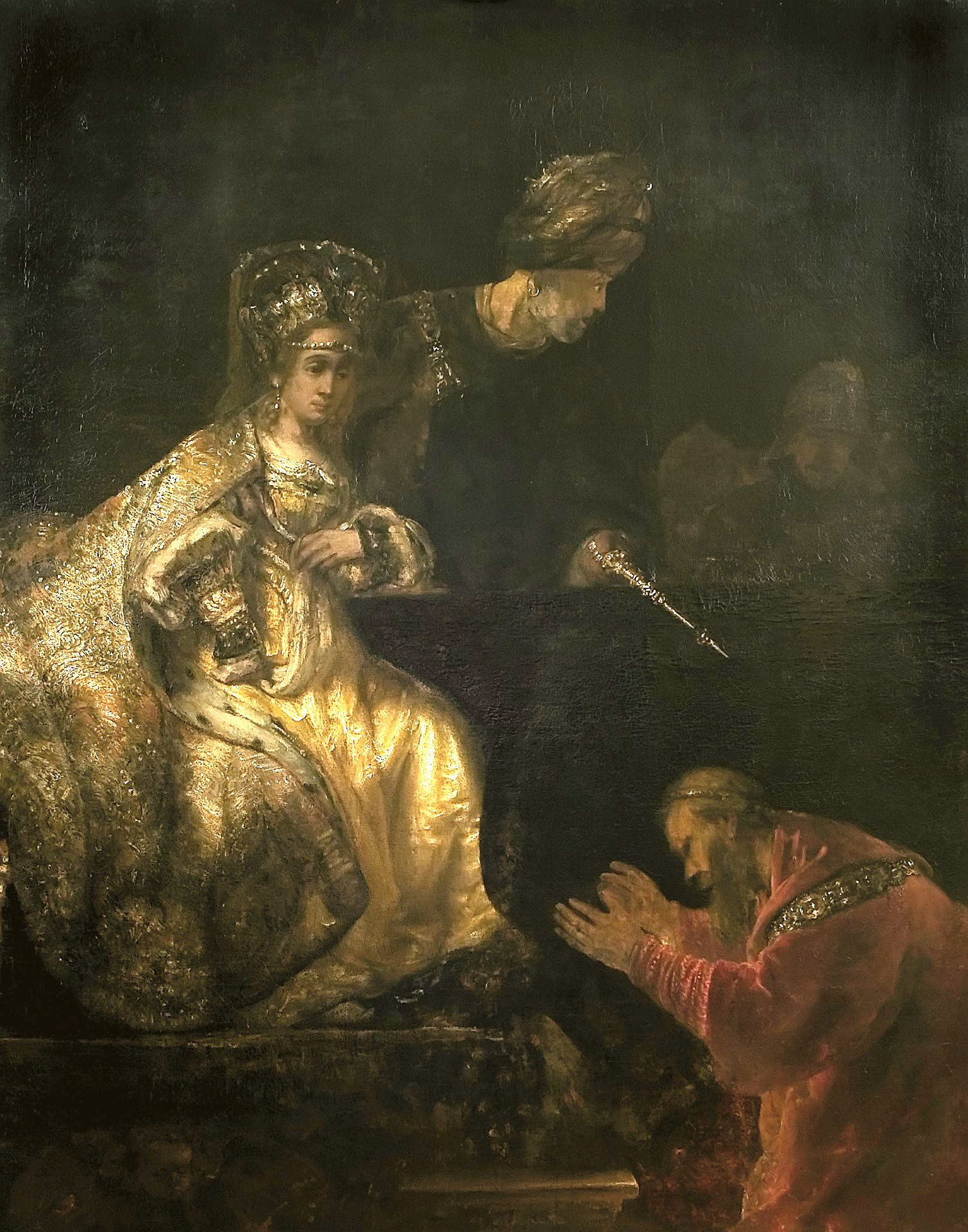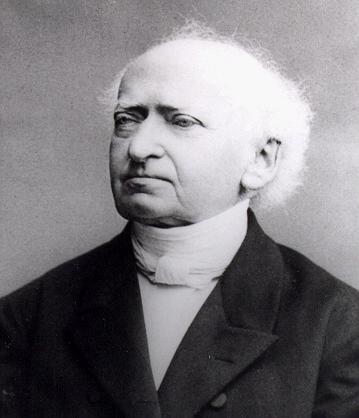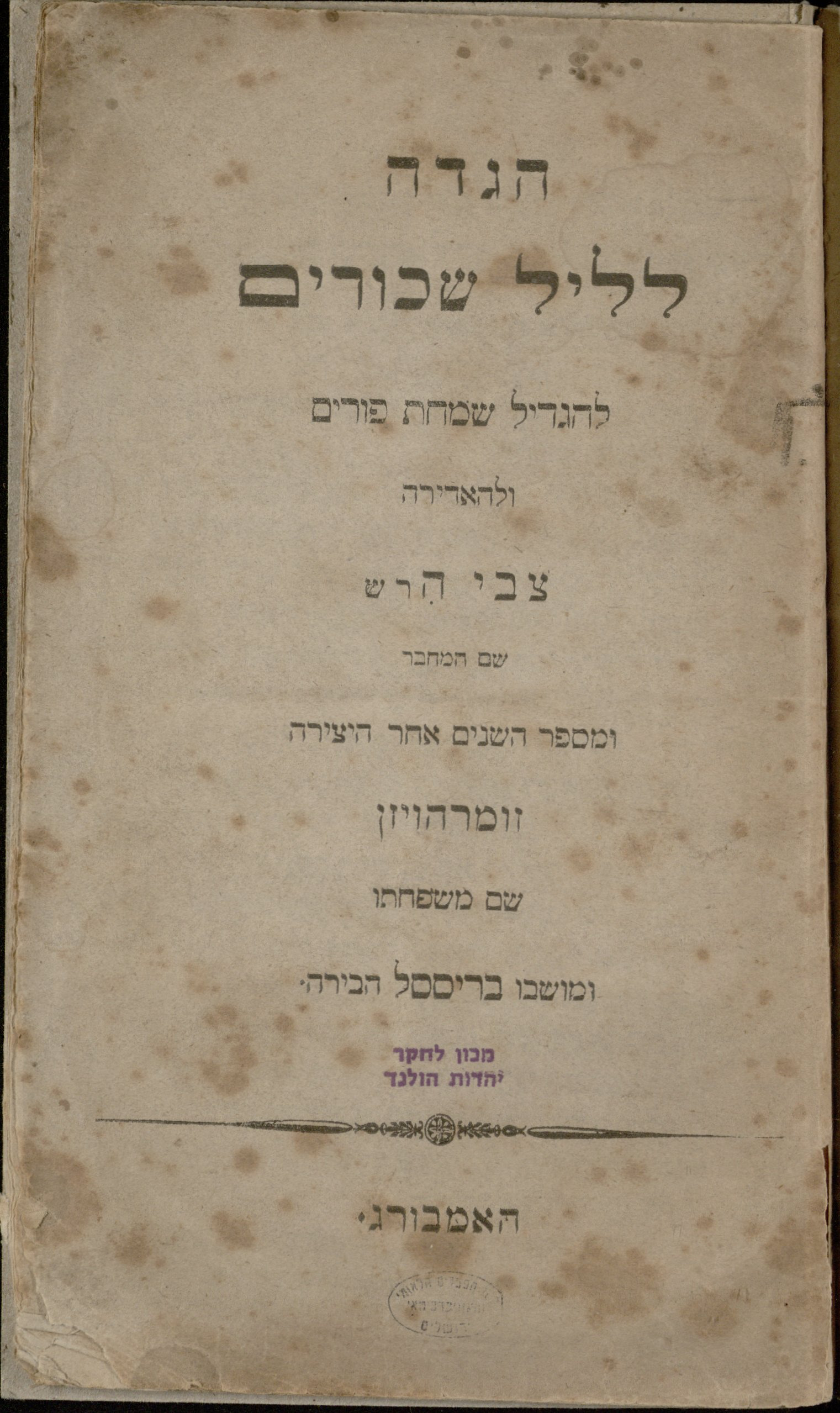|
David Raphael Ben Abraham Polido
David Raphael ben Abraham Polido (; ) was a Jewish satirist. He wrote ''Zikhron Purim'' (), a parody on the ''piyyutim'' for Purim, followed by a testament of Haman, a poem full of coarse jokes, but a good imitation of the Sephardic ''piyyutim'' (Livorno Livorno () is a port city on the Ligurian Sea on the western coast of Tuscany, Italy. It is the capital of the Province of Livorno, having a population of 158,493 residents in December 2017. It is traditionally known in English as Leghorn (pronou ..., 1703). His name, and the fact that his work was printed in Livorno, suggest that he was an Italian; but Somerhausen reads ('Polonya' or 'Polnia') instead of Polido, whereas Steinschneider interprets it as 'Fulda.' Notes References Year of death unknown Year of birth unknown Hebrew-language poets Satirists 17th-century poets 18th-century poets 17th-century Jews 18th-century Jews {{poet-stub ... [...More Info...] [...Related Items...] OR: [Wikipedia] [Google] [Baidu] |
Jews
Jews ( he, יְהוּדִים, , ) or Jewish people are an ethnoreligious group and nation originating from the Israelites Israelite origins and kingdom: "The first act in the long drama of Jewish history is the age of the Israelites""The people of the Kingdom of Israel and the ethnic and religious group known as the Jewish people that descended from them have been subjected to a number of forced migrations in their history" and Hebrews of historical History of ancient Israel and Judah, Israel and Judah. Jewish ethnicity, nationhood, and religion are strongly interrelated, "Historically, the religious and ethnic dimensions of Jewish identity have been closely interwoven. In fact, so closely bound are they, that the traditional Jewish lexicon hardly distinguishes between the two concepts. Jewish religious practice, by definition, was observed exclusively by the Jewish people, and notions of Jewish peoplehood, nation, and community were suffused with faith in the Jewish God, ... [...More Info...] [...Related Items...] OR: [Wikipedia] [Google] [Baidu] |
Purim
Purim (; , ; see Name below) is a Jewish holiday which commemorates the saving of the Jews, Jewish people from Haman, an official of the Achaemenid Empire who was planning to have all of Persia's Jewish subjects killed, as recounted in the Book of Esther (usually dated to the 5th century BCE). Haman was the royal vizier to Persian king Ahasuerus (Xerxes I or Artaxerxes I; "Khshayarsha" and "Artakhsher" in Old Persian, respectively). His plans were foiled by Mordecai of the tribe of Benjamin, and Esther, Mordecai's cousin and adopted daughter who had become queen of Persia after her marriage to Ahasuerus. The day of deliverance became a day of feasting and rejoicing among the Jews. According to the Scroll of Esther, "they should make them days of feasting and gladness, and of sending portions one to another, and gifts to the poor". Purim is celebrated among Jews by: *Exchanging gifts of food and drink, known as *Donating charity to the poor, known as *Eating a celebratory me ... [...More Info...] [...Related Items...] OR: [Wikipedia] [Google] [Baidu] |
Piyyut
A ''piyyut'' or ''piyut'' (plural piyyutim or piyutim, he, פִּיּוּטִים / פיוטים, פִּיּוּט / פיוט ; from Greek ποιητής ''poiētḗs'' "poet") is a Jewish liturgical poem, usually designated to be sung, chanted, or recited during Jewish services, religious services. ''Piyyutim'' have been written since Temple in Jerusalem, Temple times. Most ''piyyutim'' are in Hebrew language, Hebrew or Aramaic language, Aramaic, and most follow some poetic scheme, such as an acrostic following the order of the Hebrew alphabet or spelling out the name of the author. Many ''piyyutim'' are familiar to regular attendees of synagogue services. For example, the best-known ''piyyut'' may be ''Adon Olam'' ("Master of the World"). Its poetic form consists of a repeated rhythmic pattern of short-long-long-long (the so-called hazaj meter), and it is so beloved that it is often sung at the conclusion of many synagogue services, after the ritual nightly recitation of ... [...More Info...] [...Related Items...] OR: [Wikipedia] [Google] [Baidu] |
Haman
Haman ( ; also known as Haman the Agagite or Haman the evil) is the main antagonist in the Book of Esther, who according to the Hebrew Bible was an official in the court of the Persian empire under King Ahasuerus, commonly identified as Xerxes I (died 465 BCE) but traditionally equated with Artaxerxes I or Artaxerxes II. As his epithet ''Agagite'' indicates, Haman was a descendant of Agag, the king of the Amalekites. Some commentators interpret this descent to be symbolic, due to his similar personality. Retrieved 13 February 2017 Etymology and meaning of the name The name has been equated with the Persian name ''Omanes''Encyclopaedia Judaica CD-ROM Edition 1.0 1997, ''Haman'' ( peo, 𐎡𐎶𐎴𐎡𐏁, ) recorded by Greek historians. Several etymologies have been proposed for it: it has been associated with the Persian word , meaning "illustrious" (naming dictionaries typically list it as meaning "magnificent"); with the sacred drink Haoma; or with the Persian name Vohuman, m ... [...More Info...] [...Related Items...] OR: [Wikipedia] [Google] [Baidu] |
Livorno
Livorno () is a port city on the Ligurian Sea on the western coast of Tuscany, Italy. It is the capital of the Province of Livorno, having a population of 158,493 residents in December 2017. It is traditionally known in English as Leghorn (pronounced , "Leghorn" in the . or ). During the , Livorno was designed as an "". Developing c ... [...More Info...] [...Related Items...] OR: [Wikipedia] [Google] [Baidu] |
Franz Delitzsch
Franz Delitzsch (23 February 1813, in Leipzig – 4 March 1890, in Leipzig) was a German Lutheran theologian and Hebraist. Delitzsch wrote many commentaries on books of the Bible, Jewish antiquities, Biblical psychology, as well as a history of Jewish poetry, and works of Christian apologetics. Today, Delitzsch is best known for his translation of the New Testament into Hebrew (1877), and his series of commentaries on the Old Testament published with Carl Friedrich Keil. Delitzsch's son, Friedrich Delitzsch (1850–1922), was an influential Assyriologist and author of works on Assyrian language, literature, and history. Biography Although Delitzsch was Christian, he was often supposed to be of Jewish ancestry, due to the unusual breadth of his rabbinical learning, as well as his strong sympathy with the Jewish people, whom he defended against attacks. His family circumstances were also unusual, in that he had a Jewish benefactor who lived in the family house, and a Jewish godfath ... [...More Info...] [...Related Items...] OR: [Wikipedia] [Google] [Baidu] |
Hirsch Sommerhausen
Tzvi Hirsch (Hartog) Sommerhausen (; 22 October 1781 – 5 March 1853) was a German-born Dutch Jewish writer, poet, and translator. He was a central figure of the Haskalah in Holland. Biography Early life Hirsch Sommerhausen was born to Caroline () and Simon Sommerhausen in Niederwerrn, Franconia, where the latter was leader of the Jewish community. His father previously spent some years in Berlin, where he was acquainted with Mendelssohn, and in Holland. His mother belonged to a prominent rabbinic family. The family relocated to Berlin around 1790, and migrated to Holland in 1797, a year after Batavian Republic emancipated its Jewish population. There Sommerhausen devoted himself to teaching Hebrew, initially in Nijmegen and from 1799 in Amsterdam. During this period he learned German, Dutch, Flemish, French, Latin, Greek, English, Italian, Spanish, Russian, Arabic, and Syriac, acquired knowledge in mathematics, physics, and chemistry, learned drawing and engraving, and ... [...More Info...] [...Related Items...] OR: [Wikipedia] [Google] [Baidu] |
Moritz Steinschneider
Moritz Steinschneider (30 March 1816, Prostějov, Moravia, Austrian Empire – 24 January 1907, Berlin) was a Moravian bibliographer and Orientalist. He received his early instruction in Hebrew from his father, Jacob Steinschneider ( 1782; March 1856), who was not only an expert Talmudist, but was also well versed in secular science. The house of the elder Steinschneider was the rendezvous of a few progressive Hebraists, among whom was his brother-in-law, the physician and writer Gideon Brecher. Education At the age of six Steinschneider was sent to the public school, which was still an uncommon choice for Jews in the Austro-Hungarian empire at the time; and at the age of thirteen he became the pupil of Rabbi Nahum Trebitsch, whom he followed to Mikulov, Moravia in 1832. The following year, in order to continue his Talmudic studies, he went to Prague, where he remained until 1836, attending simultaneously the lectures at the Normal School. In 1836 Steinschneider we ... [...More Info...] [...Related Items...] OR: [Wikipedia] [Google] [Baidu] |
Year Of Death Unknown
A year or annus is the orbital period of a planetary body, for example, the Earth, moving in its orbit around the Sun. Due to the Earth's axial tilt, the course of a year sees the passing of the seasons, marked by change in weather, the hours of daylight, and, consequently, vegetation and soil fertility. In temperate and subpolar regions around the planet, four seasons are generally recognized: spring, summer, autumn and winter. In tropical and subtropical regions, several geographical sectors do not present defined seasons; but in the seasonal tropics, the annual wet and dry seasons are recognized and tracked. A calendar year is an approximation of the number of days of the Earth's orbital period, as counted in a given calendar. The Gregorian calendar, or modern calendar, presents its calendar year to be either a common year of 365 days or a leap year of 366 days, as do the Julian calendars. For the Gregorian calendar, the average length of the calendar year (the mea ... [...More Info...] [...Related Items...] OR: [Wikipedia] [Google] [Baidu] |
Year Of Birth Unknown
A year or annus is the orbital period of a planetary body, for example, the Earth, moving in its orbit around the Sun. Due to the Earth's axial tilt, the course of a year sees the passing of the seasons, marked by change in weather, the hours of daylight, and, consequently, vegetation and soil fertility. In temperate and subpolar regions around the planet, four seasons are generally recognized: spring, summer, autumn and winter. In tropical and subtropical regions, several geographical sectors do not present defined seasons; but in the seasonal tropics, the annual wet and dry seasons are recognized and tracked. A calendar year is an approximation of the number of days of the Earth's orbital period, as counted in a given calendar. The Gregorian calendar, or modern calendar, presents its calendar year to be either a common year of 365 days or a leap year of 366 days, as do the Julian calendars. For the Gregorian calendar, the average length of the calendar year ( ... [...More Info...] [...Related Items...] OR: [Wikipedia] [Google] [Baidu] |
Hebrew-language Poets
Hebrew (; ; ) is a Northwest Semitic language of the Afroasiatic language family. Historically, it is one of the spoken languages of the Israelites and their longest-surviving descendants, the Jews and Samaritans. It was largely preserved throughout history as the main liturgical language of Judaism (since the Second Temple period) and Samaritanism. Hebrew is the only Canaanite language still spoken today, and serves as the only truly successful example of a dead language that has been revived. It is also one of only two Northwest Semitic languages still in use, with the other being Aramaic. The earliest examples of written Paleo-Hebrew date back to the 10th century BCE. Nearly all of the Hebrew Bible is written in Biblical Hebrew, with much of its present form in the dialect that scholars believe flourished around the 6th century BCE, during the time of the Babylonian captivity. For this reason, Hebrew has been referred to by Jews as '' Lashon Hakodesh'' (, ) since ancient ... [...More Info...] [...Related Items...] OR: [Wikipedia] [Google] [Baidu] |
Satirists
This is an incomplete list of writers, cartoonists and others known for involvement in satire – humorous social criticism. They are grouped by era and listed by year of birth. Included is a list of modern satires. Under Contemporary, 1930-1960 P.J. O'Rourke Joe Queenan Early satirical authors *Aesop (c. 620–560 BCE, Ancient Greece) – ''Aesop's Fables'' *Diogenes (c. 412–323 BCE, Ancient Greece) *Aristophanes (c. 448–380 BCE, Ancient Greece) – ''The Frogs'', '' The Birds'', and '' The Clouds'' *Gaius Lucilius (c. 180–103 BCE, Roman Republic) *Horace (65–8 BCE, Roman Republic) – ''Satires'' *Ovid (43 BCE – 17 CE, Roman Republic/Roman Empire) – '' The Art of Love'' *Seneca the Younger (c. 4 BCE – 65 CE, Hispania/Rome) – ''Apocolocyntosis'' *Persius (34–62 CE, Roman Empire) *Petronius (c. 27–66 CE, Roman Empire) – ''Satyricon'' *Juvenal (1st to early 2nd cc. CE, Roman Empire) – ''Satires'' *Lucian (c. 120–180 CE, Roman Empire) *Apuleius (c. 123– ... [...More Info...] [...Related Items...] OR: [Wikipedia] [Google] [Baidu] |







